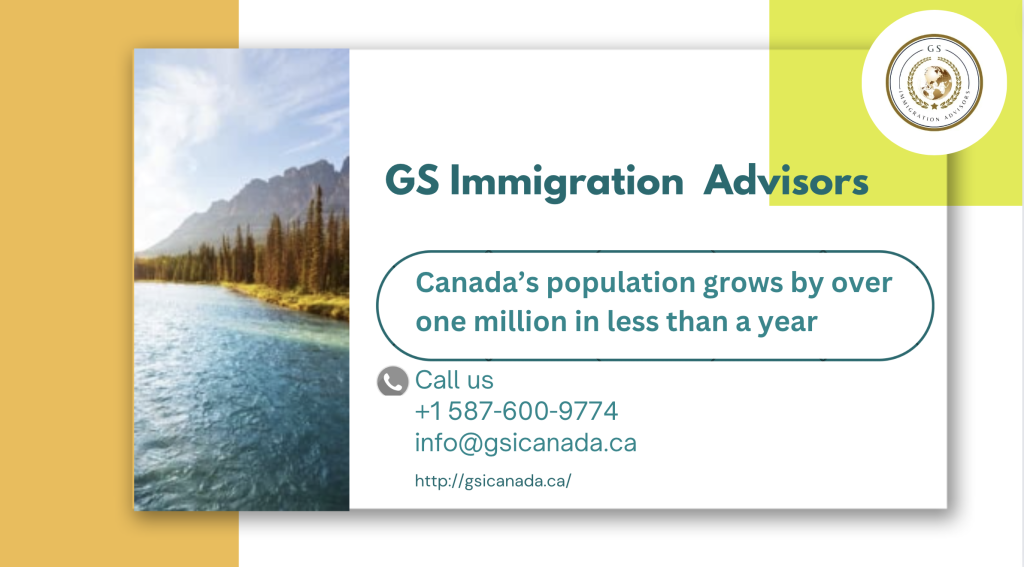
Another milestone in Canada’s population has been surpassed, and immigration is largely to blame.
The population surpassed 41 million as of April 1st, this year, according to the most recent data available from Statistics Canada (41,012, 563). For background, in June 2023, the population reached a record 40 million.
Between January and April 2024, a fourth of that growth (242,673 individuals) came in Canada, representing a 0.6% quarterly increase. 240,955 of them came via both temporary and permanent immigration routes.
More immigrants arriving permanently in the Maritimes
According to data, permanent immigrants contributed to record growth in Nova Scotia, Prince Edward Island, and New Brunswick. Permanent immigrants are defined in the report as landed immigrants or permanent residents.
Out of the 121,758 immigrants that entered the country under permanent immigration programs, more than 9,000 settled in the Maritime provinces, marking the largest increase from this sector since 1971. According to the report, the increased need for skilled personnel in the Maritime region is the reason for this expansion.
Growth for Temporary Residents is slowing
With the current surge in Non-Permanent Residents (NPRs) taken into account, as of April, Canada has a record-high 2,793,594 NPRs. Of them, 2,430,282 were in possession of employment or study permits, while the remaining 363,312 were individuals seeking asylum, individuals under protection, and affiliated groups.
According to Statistics Canada, a large number of NPRs who arrived in the first quarter of 2024 arrived prior to the announcements made by Immigration, Refugees and Citizenship Canada (IRCC) about a cap on the number of temporary residents entering Canada in the upcoming years, as detailed in the upcoming Immigration Levels Plan.
The population of Canada increased by 131,810 NPRs overall in the first quarter of 2024. According to the research, even though this is a greater increase than in 2023, it is still among the lowest increases since 2022, when numerous pandemic-related measures were eliminated.
According to research, the growth rate in the first quarter would have only been 0.3% in the absence of temporary residents.
A decline in the number of people with study permits
When comparing the first quarter of 2023 to the same period in 2023, there were about 24,000 fewer study permit holders. While Statistics Canada acknowledges that fewer study permits are issued during that time of year on average, it also suggests that there may be numerous reasons for the sharp decline, including modifications to Canada’s International Student Program that were announced in January.
For instance, a Provincial Attestation Letter (PAL) from their designated learning institution (DLI) is now necessary for international students. The amount of international student acceptances that the IRCC allots to each province determines how many PALs are issued by the provinces. This implies that the provincial government of the DLI must authorize the admission of any international student.
These allotments are a component of the IRCC’s recently declared cap on the quantity of study permits it would handle in 2019. In 2024, the agency will only handle 606,000 applications for study permits, with a 60% approval rate predicted.
Provinces were given until March 31 to put in place a mechanism for providing PALs after the announcement in January. However, many of them delayed issuing PALs until near the deadline, which caused some study permit applications to be delayed.
Canada’s immigration rate
The number of permanent immigrants who entered Canada in line with the Immigration Levels Plan 2024–2026 is reported by Statistics Canada.
By the end of 2024, 485,000 new immigrants will enter Canada through pathways designated for permanent residents, according to the Plan. This goal is expected to increase to 500,000 in 2025 and remain there until 2026. The 2025 and 2026 targets, however, are merely estimates that could alter after the 2025–2027 Plan is made public.
According to IRCC, the inclusion of temporary residents in the Plan will serve as a “soft cap” for individuals with work permits, study permits, or temporary resident (visitor) visas, among other types of temporary residents.
The impact of a rapidly expanding population on housing affordability as well as mounting strain on Canada’s healthcare system are the reasons behind these developments. The Canadian government has also reported a decline in support for high immigration levels over the previous year. Support for immigration in Canada peaked in 2022 and subsequently declined by about 20% in 2023, according to the Environics Institute.
In addition, two Provincial Nominee Program-only draws and one Canadian Experience Class in the last month have targeted individuals who are probably already temporary residents living and working in Canada for Express Entry. This could assist IRCC in achieving its goal of having permanent residents by 2024 without increasing Canada’s population through the invitation of foreign applicants.